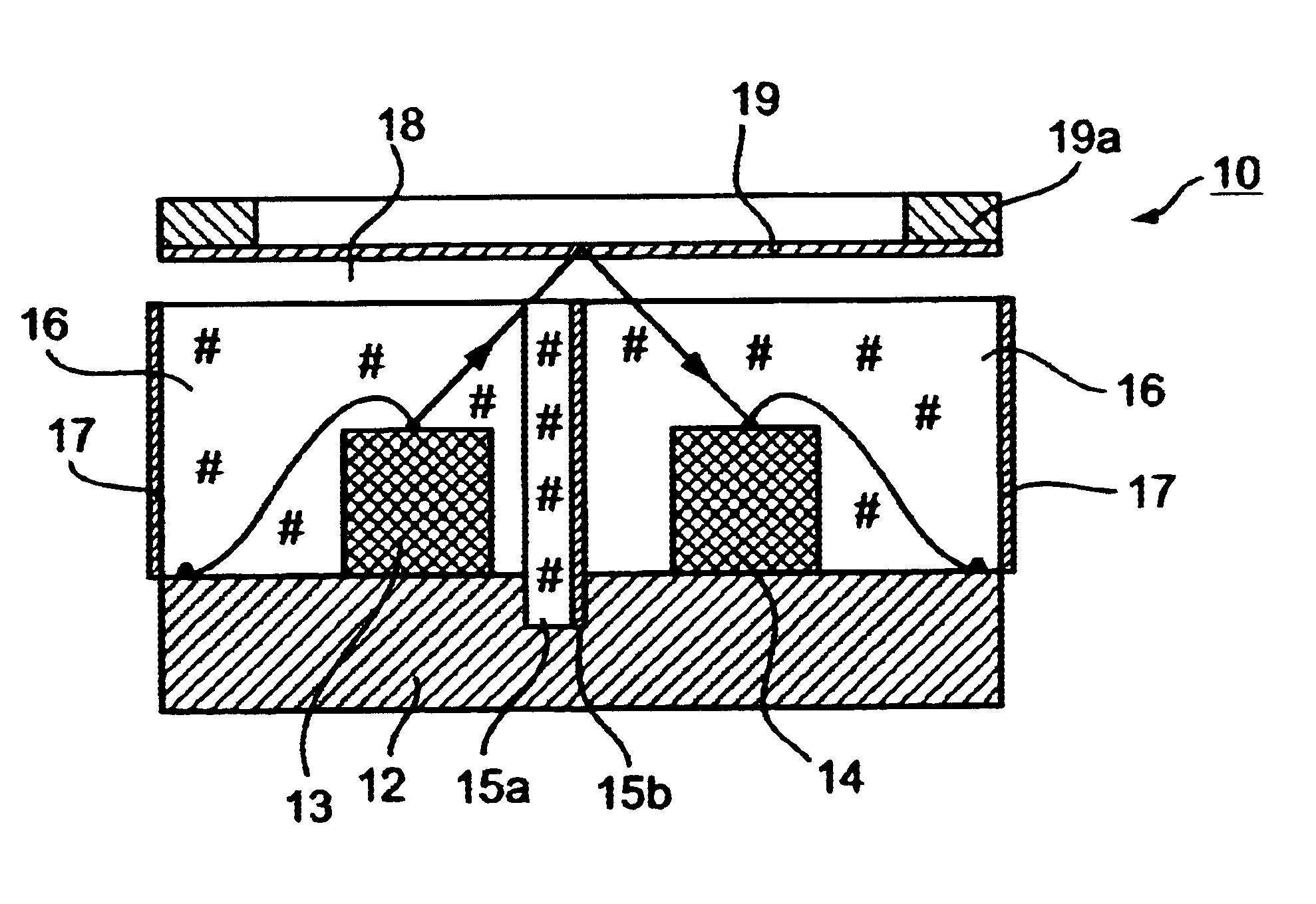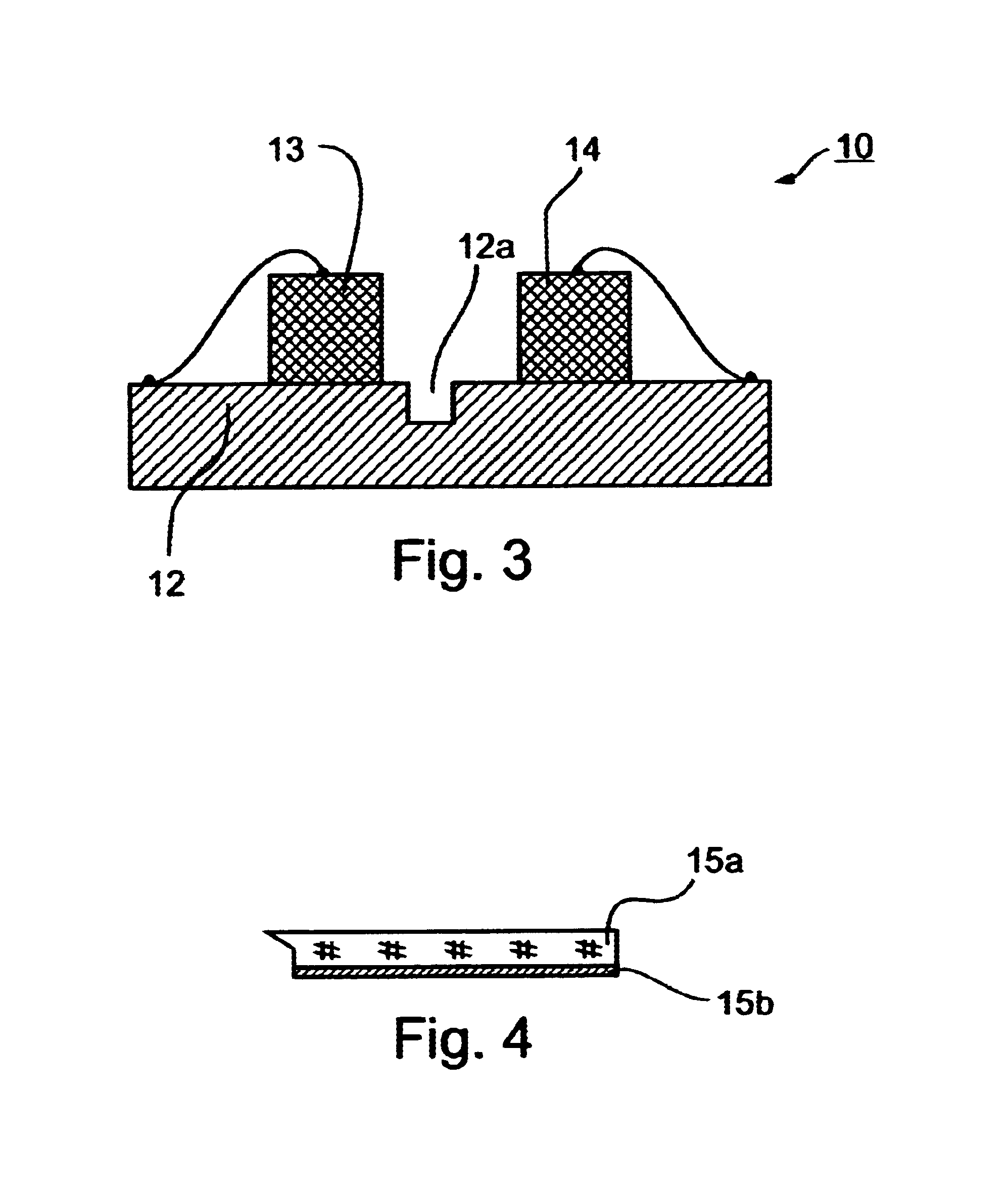Optical transducers and methods of making same
a technology of optical transducers and optical transducers, which is applied in the field of optical transducers, can solve the problems of large influence on sensitivity and reliability, difficult to produce such optical transducers in volume and at relatively low cost, and require extremely high precision in the manufacture and assembly of their respective parts. to achieve the effect of maximizing the effective surface and low cos
- Summary
- Abstract
- Description
- Claims
- Application Information
AI Technical Summary
Benefits of technology
Problems solved by technology
Method used
Image
Examples
Embodiment Construction
. 2-5)
FIG. 2 schematically illustrates an optical transducer of the general type shown in FIG. 1 but modified in accordance with the present invention to provide the advantages of the present invention. An important modification is that, instead of forming the optical shield (6, FIG. 1) as a separate layer between the light source and the light detector, as in the prior art construction of FIG. 1, the light shield is in the form of a thin layer of a light-blocking material on a transparent plate, which transparent plate is fixed to the base member between the light source and light detector. As will be described more particularly below, these features, as well as other features of the present invention, permit highly-sensitive optical transducers to be produced in volume and at relatively low cost utilizing mass production techniques.
The optical transducer 10 illustrated in FIG. 2 is produced as follows:
First, the base member 12 (corresponding to base member 2 in FIG. 1) is formed w...
PUM
 Login to View More
Login to View More Abstract
Description
Claims
Application Information
 Login to View More
Login to View More - R&D
- Intellectual Property
- Life Sciences
- Materials
- Tech Scout
- Unparalleled Data Quality
- Higher Quality Content
- 60% Fewer Hallucinations
Browse by: Latest US Patents, China's latest patents, Technical Efficacy Thesaurus, Application Domain, Technology Topic, Popular Technical Reports.
© 2025 PatSnap. All rights reserved.Legal|Privacy policy|Modern Slavery Act Transparency Statement|Sitemap|About US| Contact US: help@patsnap.com



